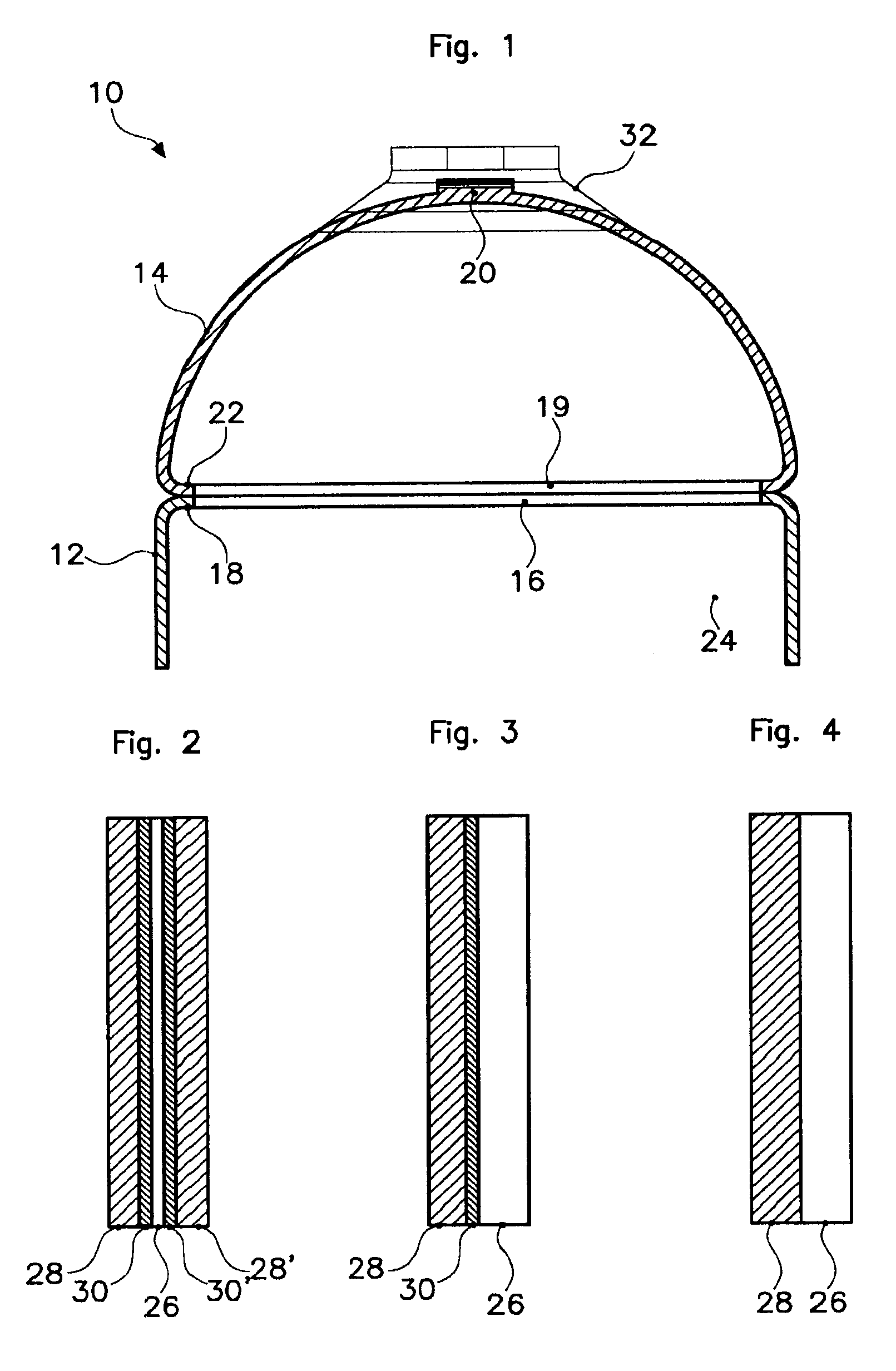Method for manufacturing an inner liner for a storage tank
a storage tank and inner liner technology, applied in the direction of mechanical equipment, vessel construction details, electrochemical generators, etc., can solve the problems of no production vehicle fueled by compressed hydrogen, no standard that addresses the environmental concerns of compressed gas permeation, and likely to be much more restrictive than the current emissions standard, etc., to achieve strong mechanical connection, strong and impermeable connection, and limit the risk of permeability
- Summary
- Abstract
- Description
- Claims
- Application Information
AI Technical Summary
Benefits of technology
Problems solved by technology
Method used
Image
Examples
Embodiment Construction
[0041]Referring to FIG. 1, a top section of a polymeric inner liner is indicated generally at 10 and comprises a cylindrical body 12, a first end of which is shown in FIG. 1, and a dome-shaped end cap 14.
[0042]The cylindrical body 12 comprises a first open end 16 and comprises a first peripheral connection tab 18.
[0043]The end cap 14 has a base and an apex, wherein the base has a second open end 19 and the apex has a communication opening 20 for forming a communication between the inner chamber of the storage tank and the exterior of the storage tank. The end cap 14 comprises, at its base, a second peripheral connection tab 22.
[0044]The peripheral connection tabs 18, 22 are arranged in such a way that, when the end cap 14 is placed on the first end of the cylindrical body 12, the peripheral connection tabs 18, 22 are in alignment and can be connected by welding. Once welded together, the cylindrical body 12 and the end cap 14 form an inner chamber 24 wherein compressed gas can be st...
PUM
| Property | Measurement | Unit |
|---|---|---|
| thickness | aaaaa | aaaaa |
| thickness | aaaaa | aaaaa |
| pressure | aaaaa | aaaaa |
Abstract
Description
Claims
Application Information
 Login to View More
Login to View More - R&D
- Intellectual Property
- Life Sciences
- Materials
- Tech Scout
- Unparalleled Data Quality
- Higher Quality Content
- 60% Fewer Hallucinations
Browse by: Latest US Patents, China's latest patents, Technical Efficacy Thesaurus, Application Domain, Technology Topic, Popular Technical Reports.
© 2025 PatSnap. All rights reserved.Legal|Privacy policy|Modern Slavery Act Transparency Statement|Sitemap|About US| Contact US: help@patsnap.com



